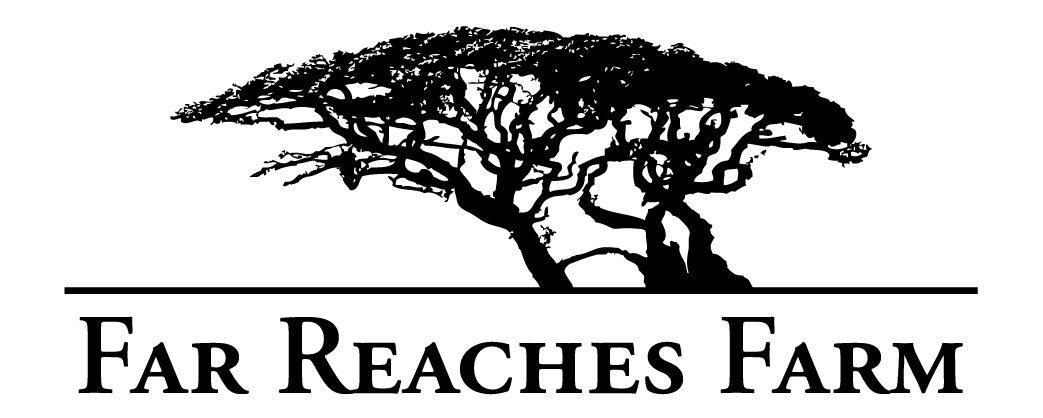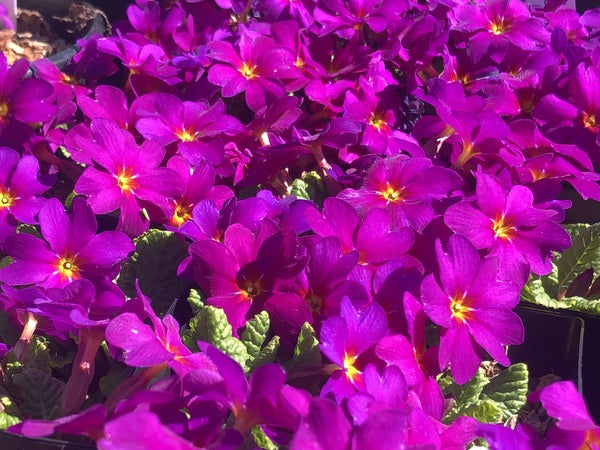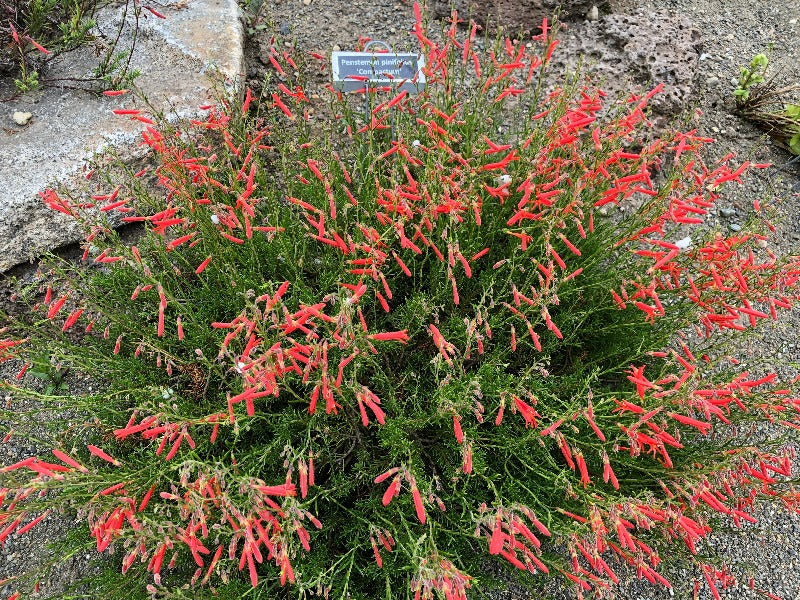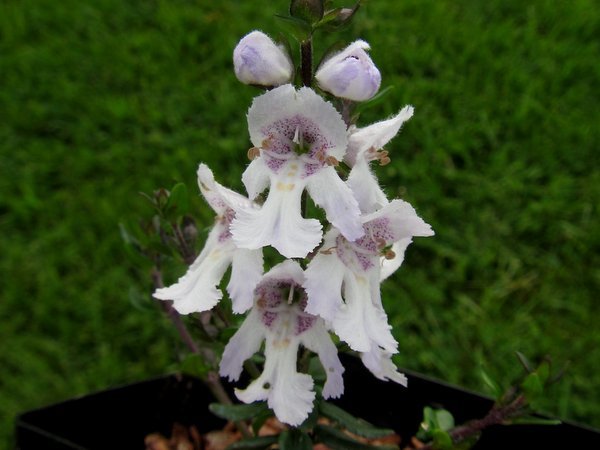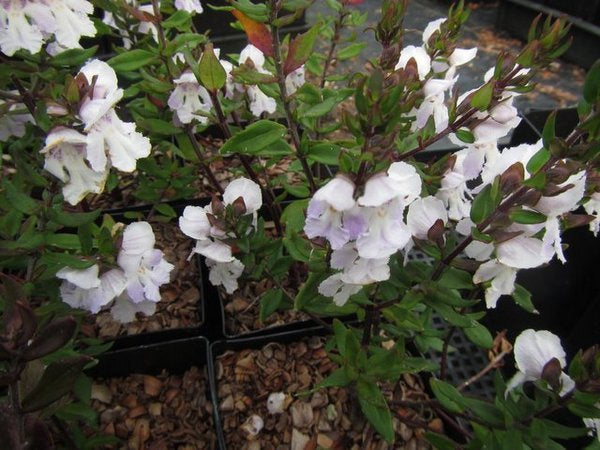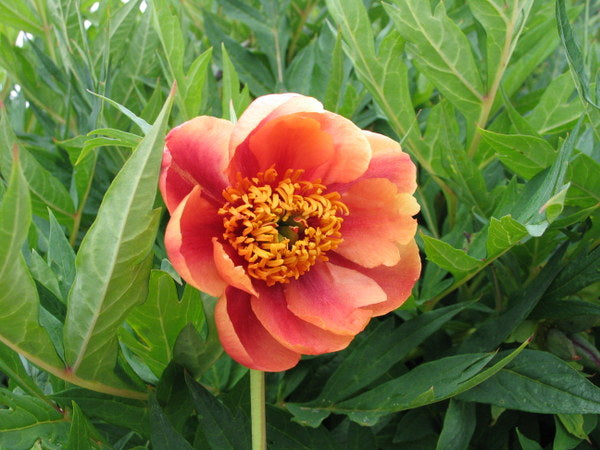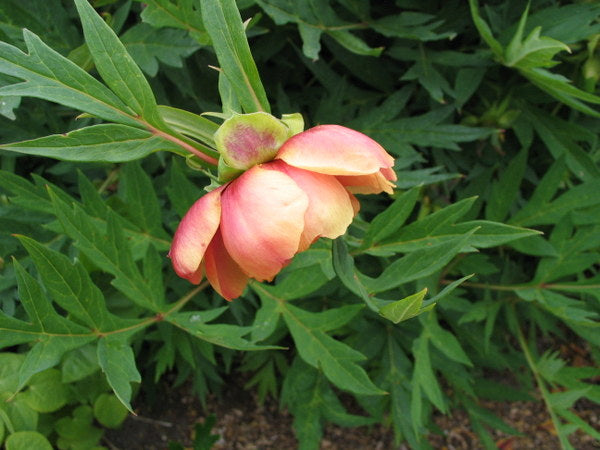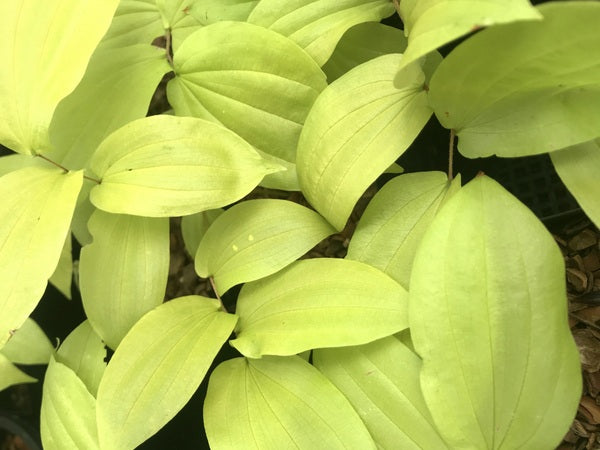Sort by:
235 products
235 products
Striking hybrid with yellow flowers, nicely fringed lip and interior heavily spotted in red. We have seen one reference to this as being a hybrid between P. albiflora and the lovely yellow P. forrestii. We have seen forrestii in the Cangshan and despite it being fall and thus no leaves or flowers - just dormant pseudobulbs packed into a rock crevice, we still did a botanical St. Vitus dance. This has filled that void magnificently.
It's worth noting that some in Pleione circles believe this to be a case of mistaken identity in which Pleione 'Ducat' was exhibited incorrectly under this name and has since been usurped by the impostor name in the trade. We have here preserved 'Golden Gate' due to its prevalence and it being the name we received it under. Regardless an excellent and beautiful plant!
These are from a superb collection by Darrell Probst from China, which is notable for having over 20 small maroon-mahogany flowers clustered just under the leaf blade. If you have a choice, more flowers makes it easy! This is a striking addition to the shade garden and a moist rich soil will make this very happy, which has a direct positive influence on you. We're pretty sure you won't find this too many other places. We always liked it but now we like it even more!
One of the stars in our shade garden is this Chinese Trillium relative. We find this eminently superior to the typical Paris polyphylla typically offered. These are seedlings from our garden plants which are marvels of vegetative increase. The 3 bulbs we originally planted 8 years ago have now increased to over 50 stems up to 40" tall with elegant flowers and showy orange fruit. Hope these kids have learned something from their folks.If you are ordering this as a dormant bare root bulb, it is fine to plant it outside now (assuming the ground isn't frozen etc) as these have been growing outside here at the nursery. Three inches deep should suffice and if you live in harsh winter climates, a good mulch will help. These come up late in the spring for us - later than other forms - so don't worry too much. They like an acid soil, moist yet draining, and we expect that if you can grow Trilliums successfully, you should succeed with this one. Zone 6 for sure and probably into zone 5 although we have no personal experience with it in those regions.
Choice woodland species from Japan where the small bowl-shaped white flowers are much admired and combine harmoniously with the simple rounded leaflets. An easy herbaceous species and one of the few Peonies that thrives in the shade. Looks great with Ferns, Hellebores and Hostas. This species has been submerged into Paeonia obovata by Hong De-Yuan in his extraordinary monograph 'Peonies of the World, Taxonomy and Phytogeography'. This book, along with the newly published second volume (2011) 'Peonies of the World, Polymorphism and Diversity', will remain the undisputed last answer for the foreseeable future.
That said, we will retain the epithet japonica to differentiate it from obovata as this blooms much earlier than our pink P. obovata from Japan and has an entirely different horticultural gestalt in the garden. We can hear Hong De-Yuan now "I pour my life into this unrivaled and exhaustive treatment of the genus Paeonia and this is what you take from it - horticultural gestalt? AARRRGGGHHH!" These are big blooming size bare root plants, most with multiple eyes.
A plant of many names, 'Grandiceps', 'Grandiceps Group', 'Diane' here we have opted for crediting the original selector of this strongly crested form of our native licorice fern, Lawrence Crocker cofounder of Siskiyou Rare Plant Nursery and resident fern man. The edges and end of the fronds are highly curled and rippling ready to lend a flamboyant touch of crashing evergreen waves to the boulder or log of your choosing.
